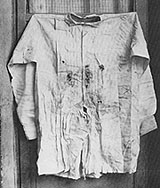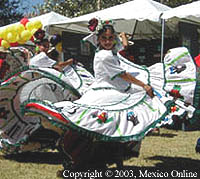The holiday of Cinco De Mayo, The 5th Of May, commemorates the victory of the Mexican militia over the French army at The Battle Of Puebla in 1862. It is primarily a regional holiday celebrated in the Mexican state capital city of Puebla and throughout the state of Puebla, with some limited recognition in other parts of Mexico, and especially in U.S. cities with a significant Mexican population. It is not, as many people think, Mexico's Independence Day, which is actually September 16.
Setting The Stage
The battle at Puebla in 1862 happened at a violent and chaotic time in Mexico's history. Mexico had finally gained independence from Spain in 1821 after a difficult and bloody struggle, and a number of internal political takeovers and wars, including the Mexican-American War (1846-1848) and the Mexican Civil War of 1858, had ruined the national economy.
|
| ||
Mexico Confronts The Invasion
Unfortunately, the victory was short lived. Upon hearing the bad news, Napoleon III had found an excuse to send more troops overseas to try and invade Mexico again, even against the wishes of the French populace. 30,000 more troops and a full year later, the French were eventually able to depose the Mexican army, take over Mexico City and install Maximilian as the ruler of Mexico.
 Maximilian's rule of Mexico was also short lived, from 1864 to 1867.
With the American Civil War now over, the U.S. began to provide more
political and military assistance to Mexico to expel the French, after
which Maximilian was executed by the Mexicans - his bullet riddled shirt
is kept at the museum at Chapultepec Castle in Mexico City. So despite
the eventual French invasion of Mexico City, Cinco de Mayo honors the
bravery and victory of General Zaragoza's smaller, outnumbered militia
at the Battle of Puebla in 1862.
Maximilian's rule of Mexico was also short lived, from 1864 to 1867.
With the American Civil War now over, the U.S. began to provide more
political and military assistance to Mexico to expel the French, after
which Maximilian was executed by the Mexicans - his bullet riddled shirt
is kept at the museum at Chapultepec Castle in Mexico City. So despite
the eventual French invasion of Mexico City, Cinco de Mayo honors the
bravery and victory of General Zaragoza's smaller, outnumbered militia
at the Battle of Puebla in 1862.Today's Celebration
For the most part, the holiday of Cinco de Mayo is more of a regional holiday in Mexico, celebrated most vigorously in the state of Puebla. There is some limited recognition of the holiday throughout the country with different levels of enthusiasm, but it's nothing like that found in Puebla.
 Celebrating Cinco de Mayo has become increasingly popular along the
U.S.-Mexico border and in parts of the U.S. that have a high population
of people with a Mexican heritage. In these areas the holiday is a
celebration of Mexican culture, of food, music, beverage and customs
unique to Mexico.
Celebrating Cinco de Mayo has become increasingly popular along the
U.S.-Mexico border and in parts of the U.S. that have a high population
of people with a Mexican heritage. In these areas the holiday is a
celebration of Mexican culture, of food, music, beverage and customs
unique to Mexico.
Commercial interests in the United States and Mexico have also had a hand in promoting the holiday, with products and services focused on Mexican food, beverages and festivities, with music playing a more visible role as well. Several cities throughout the U.S. hold parades and concerts during the week following up to May 5th, so that Cinco de Mayo has become a bigger holiday north of the border than it is to the south, and being adopted into the holiday calendar of more and more people every year.
Source mexonline.com

